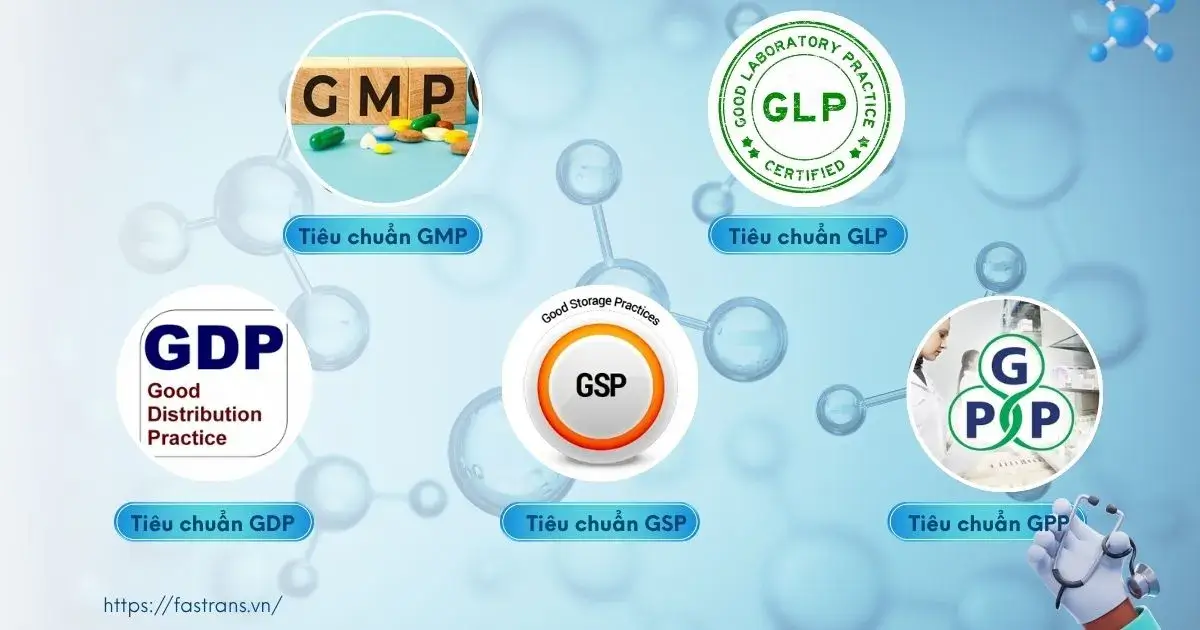Overview of GMP, GLP, GSP, GDP, and GPP: What Are the Differences?
In pharmaceuticals, product quality and safety directly impact human health. Compliance with international standards-GMP, GLP, GSP, GDP, and GPP-is essential. Each standard covers a specific stage of the product lifecycle, from research and manufacturing to storage, transportation, and retail distribution.

Definitions of GMP, GLP, GSP, GDP, and GPP Standards
1. GMP – Good Manufacturing Practice
✔️ Definition: GMP is the core standard in the pharmaceutical sector, defining the processes, conditions, and controls required to ensure that products are consistently produced and controlled to meet quality standards.
✔️ Scope: Pharmaceutical manufacturing plants, dietary supplements, cosmetics.
✔️ Objective: To prevent risks that could affect product quality during manufacturing.
2. GLP – Good Laboratory Practice
✔️ Definition: GLP governs the principles for designing, conducting, monitoring, and reporting non-clinical laboratory studies to guarantee data transparency and reliability.
✔️ Scope: Testing and research laboratories.
✔️ Objective: To ensure test results are accurate and verifiable.
3. GSP – Good Storage Practice
✔️ Definition: GSP specifies the conditions for storing raw materials, intermediates, and finished pharmaceutical products to prevent quality deterioration during storage.
✔️ Scope: Warehouses, distribution centers.
✔️ Objective: To maintain temperature, humidity, lighting, and other conditions in accordance with product requirements.
4. GDP – Good Distribution Practice.
✔️ Definition: GDP ensures pharmaceutical products are distributed properly and under suitable conditions from manufacturers to pharmacies or healthcare facilities.
✔️ Scope: Transportation, freight forwarding, distributors.
✔️ Objective: To avoid risks that could compromise drug quality during transit.
5. GPP – Good Pharmacy Practice
✔️ Definition: GPP sets the standards for pharmacy operations-the final point of contact with consumers in the supply chain.
✔️ Scope: Retail pharmacies, hospital pharmacies.
✔️ Objective: To provide the right medication, correct dosages, and comprehensive guidance to patients.
The Differences Between the Standards
While these five standards differ in scope and purpose, they share the common goal of protecting pharmaceutical quality and safety. The pharmaceutical supply chain must comply with and uphold all these standards.
| Standard | Scope | Primary Objective | Role in Supply Chain |
| GMP | Manufacturing | Ensure quality in pharmaceutical production | Foundation for overall quality control |
| GLP | Laboratory | Guarantee accurate, verifiable test results | Support product development and approval |
| GSP | Storage | Maintain optimal storage conditions | Protect quality prior to distribution |
| GDP | Transportation | Ensure safety in wholesale distribution | From manufacturer to pharmacy/healthcare |
| GPP | Pharmacy | Ensure safety in retail pharmacy operations | Direct interaction with end consumers |
Logistics is critical in maintaining these standards by ensuring controlled temperature, humidity, timely delivery, and real-time monitoring. Without proper logistics, product quality can be compromised at any stage. Fastrans is a leading pharmaceutical logistics provider in Vietnam, fully compliant with GSP and GDP standards, committed to supporting safe and efficient product distribution aligned with international regulations.



